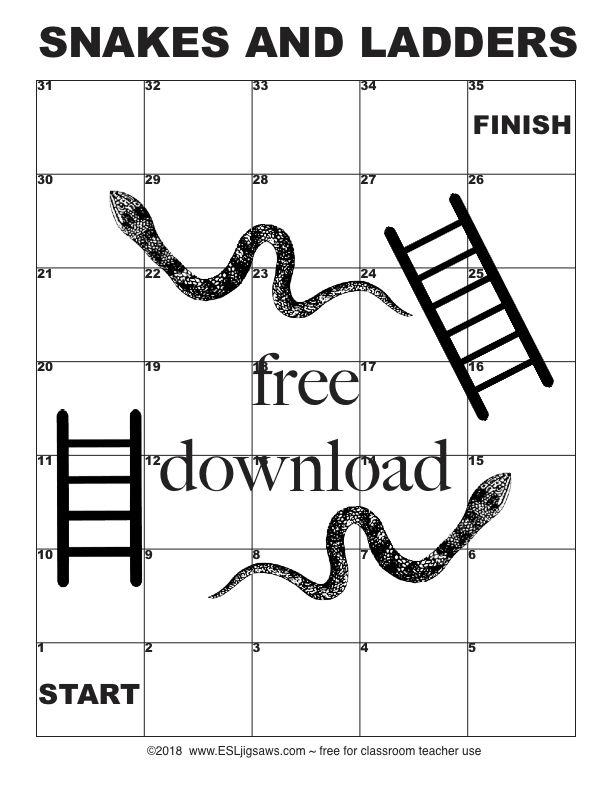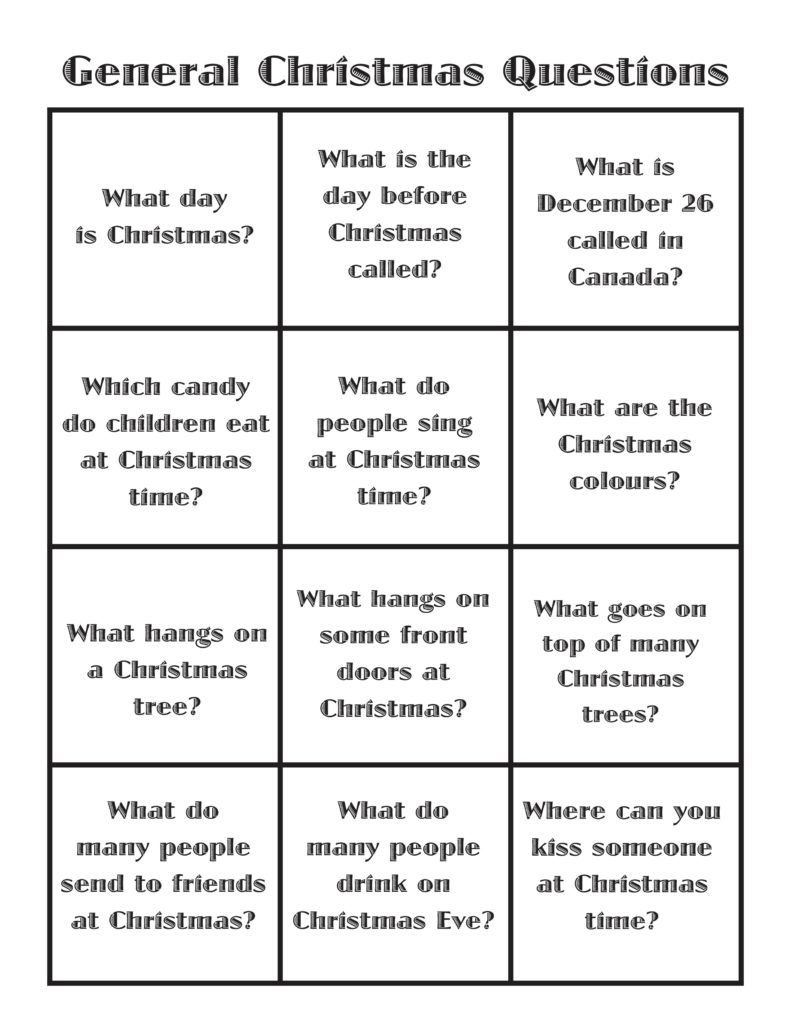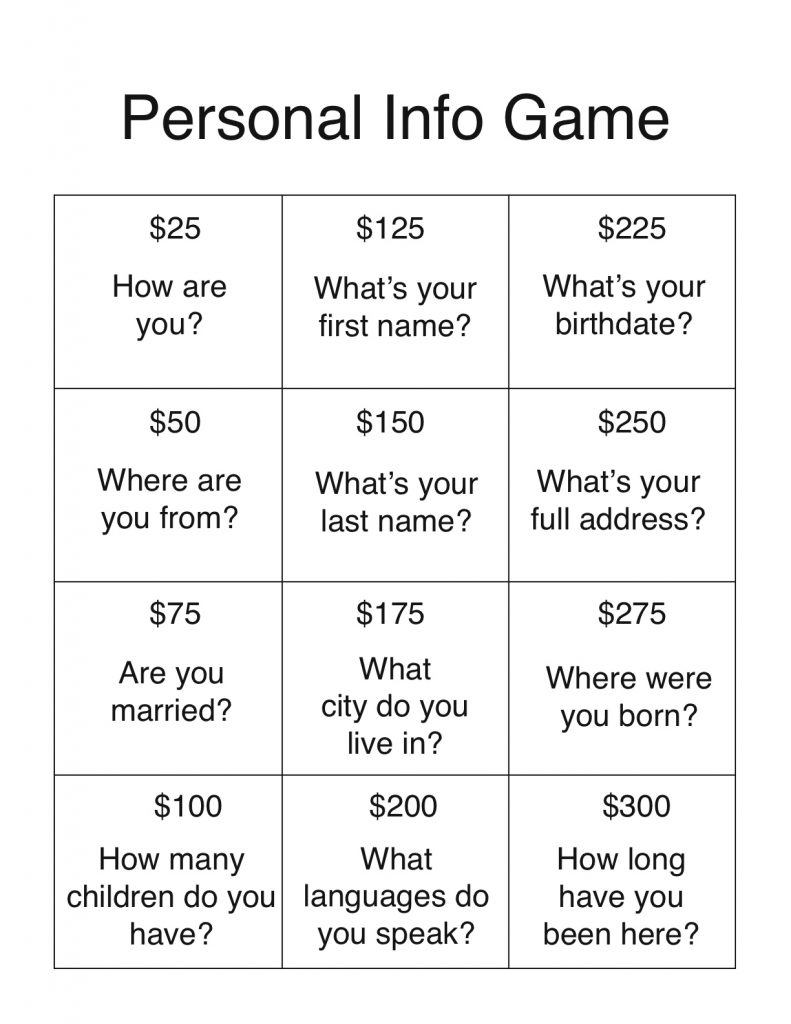Learning about the holidays is not just fun, it helps students crack our cultural code. I’ve made three sets of review questions for Christmas and two game templates for playing with them. You could use the game templates for reviewing any material.
In a snakes and ladders game, students roll the dice and move their game piece along the board. Each time they land on a square, they pick up a review question and answer it. If they land at the bottom of a ladder, they move up to the top of the ladder. If they land on the head of a snake, they slide down to the bottom of the snake. Because I want students to spend time reviewing material, I prefer a game template with shorter ladders and shorter snakes, which is what I have made here.
Clicking on the images below will bring up a larger PDF you can print out.

I use this game below with play money. Questions are pre-sorted into four piles, based on level of difficulty, with the $25 questions being the easiest. Students choose a dollar amount and answer a correspondingly difficult question. Play money is awarded for correct answers.

Here are the Christmas questions to use with the games:
General Christmas Questions:

Here are the questions about Santa:

Here are the questions about Jesus:

Let me know how it goes.





